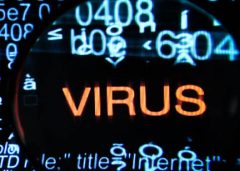If you think your computer might be infected with malware, it’s important not to panic and jump to conclusions. You don’t necessarily have to wipe your entire system clean and start over. There are various factors that determine if a complete system wipe is necessary, so it’s not always the best solution. Here are a few steps you can take if you suspect malware on your computer;
Step 1; First, check if your computer is actually infected with any kind of malicious software.Here are some signs that your computer might be infected; if it’s running slower than usual, if your web browser suddenly looks different or takes you to unfamiliar websites, if you experience frequent crashes or if you receive messages indicating corrupted files.
If you suspect malware, it’s advisable to use dedicated software specifically designed for identifying and removing it. It’s important to note that not all antivirus software is effective against malware. Therefore, it’s crucial to select the right software for this purpose. In some cases, malware can even disable antivirus programs. If you don’t have any antivirus software installed on your computer, consider purchasing or downloading a reliable application. If malware is preventing you from downloading antivirus software directly onto your infected computer, you may need to download the software on another device and transfer it using a disk or a flash drive. Keep in mind that certain advanced malware can disable administrative functions on your computer as well.
For those using the Windows operating system, having antivirus software is highly recommended. While practicing safe habits can help avoid computer viruses to some extent, the individuals behind these viruses are constantly finding new ways to infect machines. There are numerous antivirus programs available in the market. Some are free while others require purchase. It’s essential to keep in mind that free versions may not provide reliable protection for your system. Therefore, investing in quality antivirus protection is strongly recommended to ensure the safety of your data.
Step 2; Assuming you have the ability to run antivirus software, it’s important to ensure that it is updated and scan your computer for any potential threats. Most antivirus programs have a notification page that provides a list of identified viruses or malware. Take note of the names of each malicious application detected by your software.
Many antivirus programs offer options to remove or isolate malware automatically. You may need to choose an appropriate action and confirm your decision to allow the antivirus software to address the identified threats.
Step 3; If the antivirus software reports that it has successfully eliminated the detected malware, shut down your computer, restart it and run another scan using the same antivirus software. If the subsequent scan confirms that your system is free from any infections, you should be good to proceed. However, if different malware is detected during this second scan, you might need to repeat the previous steps. In case you encounter the same malware as before during subsequent scans, alternative solutions may be required.
Step 4; If you are unable to access your antivirus software or continue experiencing repeated occurrences of the same malware after multiple scans, consider starting your computer in Safe Mode. This mode enables you to work with essential components of Windows OS only. In Safe Mode, try utilizing Malwarebytes Anti Malware software. If new instances of malware appear during this process, you might have discovered a potential solution.
If, for any reason, your antivirus program is unable to eliminate the virus by itself, you can try searching online for the names of the malicious software that your antivirus detected using a reputable internet security company.
To prevent infections, it is advisable to refrain from opening unfamiliar email attachments or clicking on links in emails or other messages. Additionally, it is recommended to avoid visiting suspicious websites.

